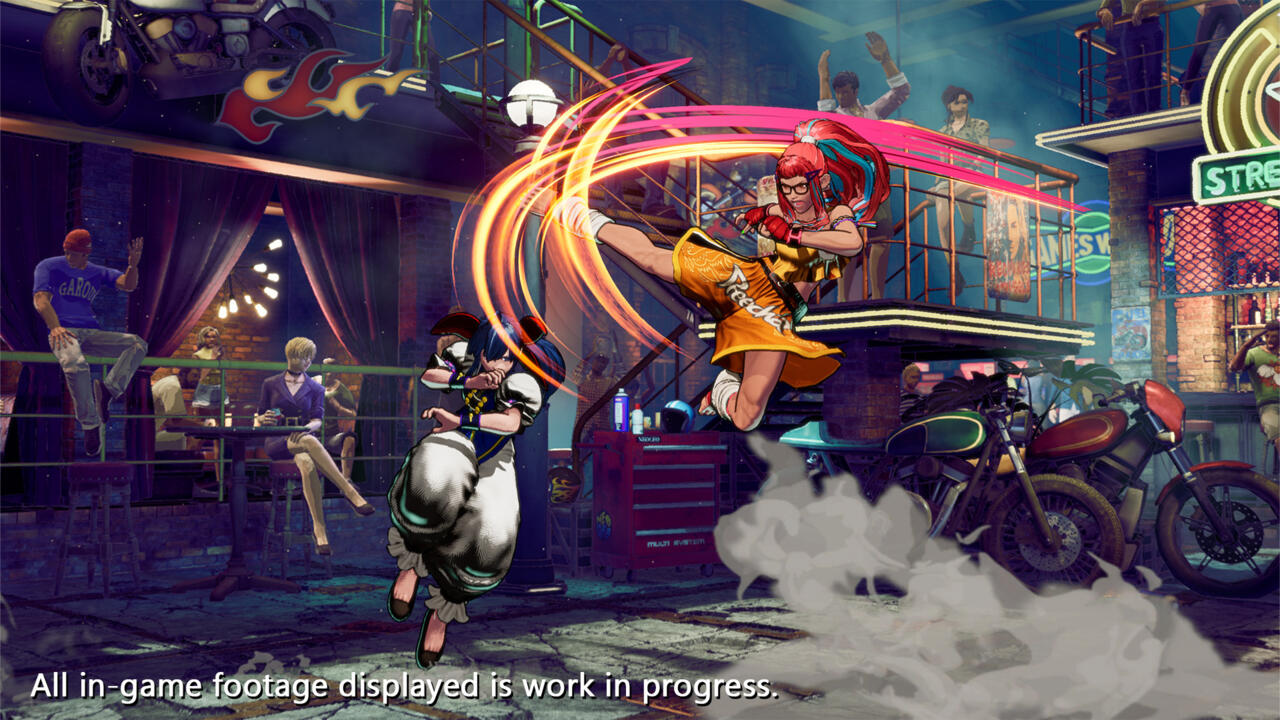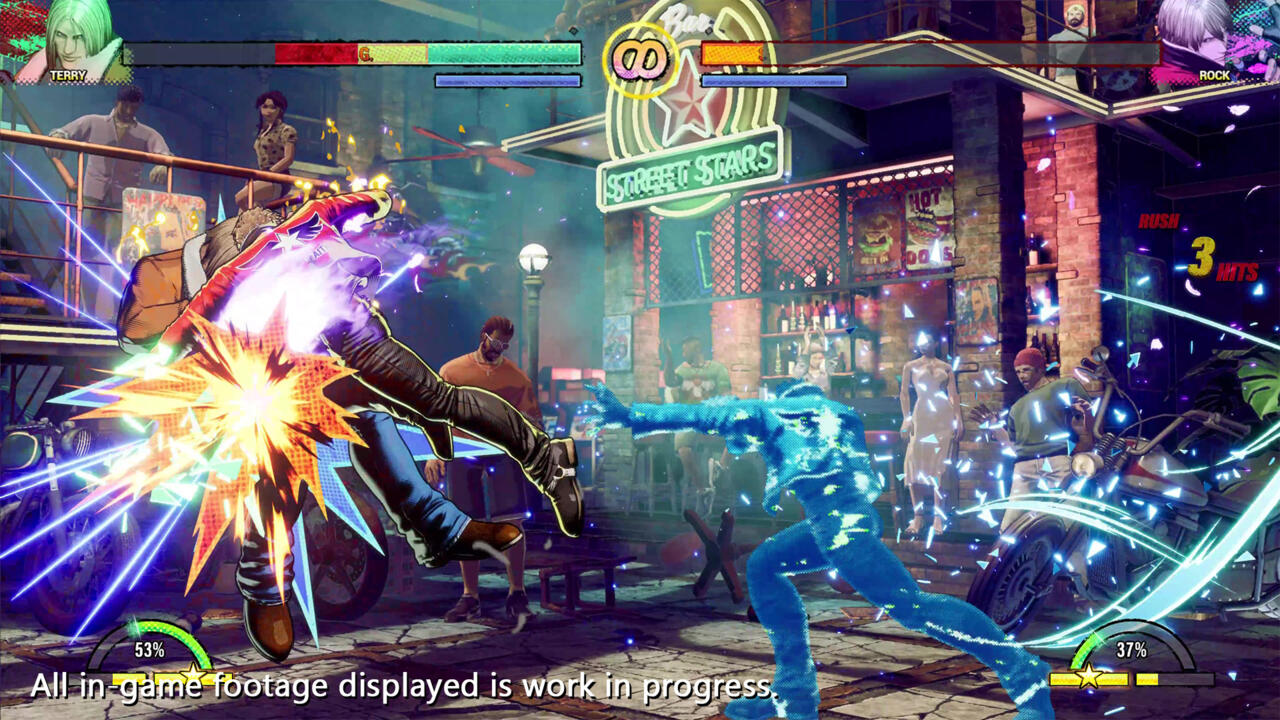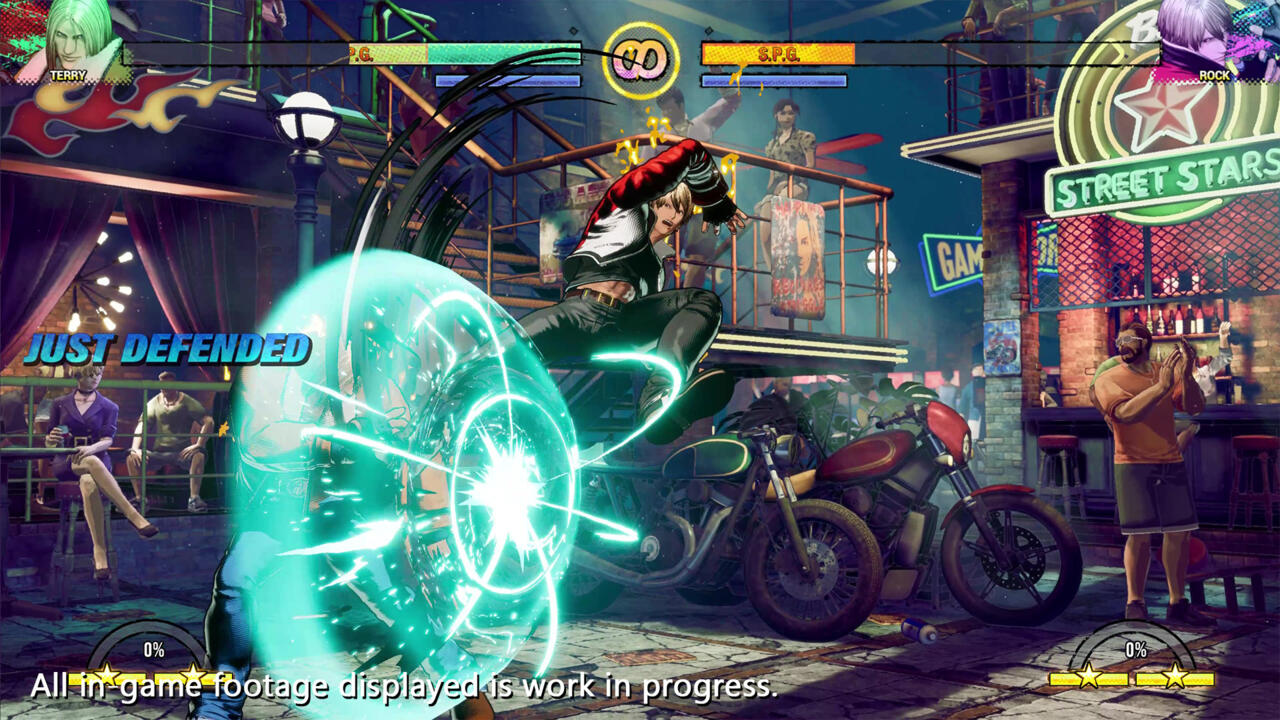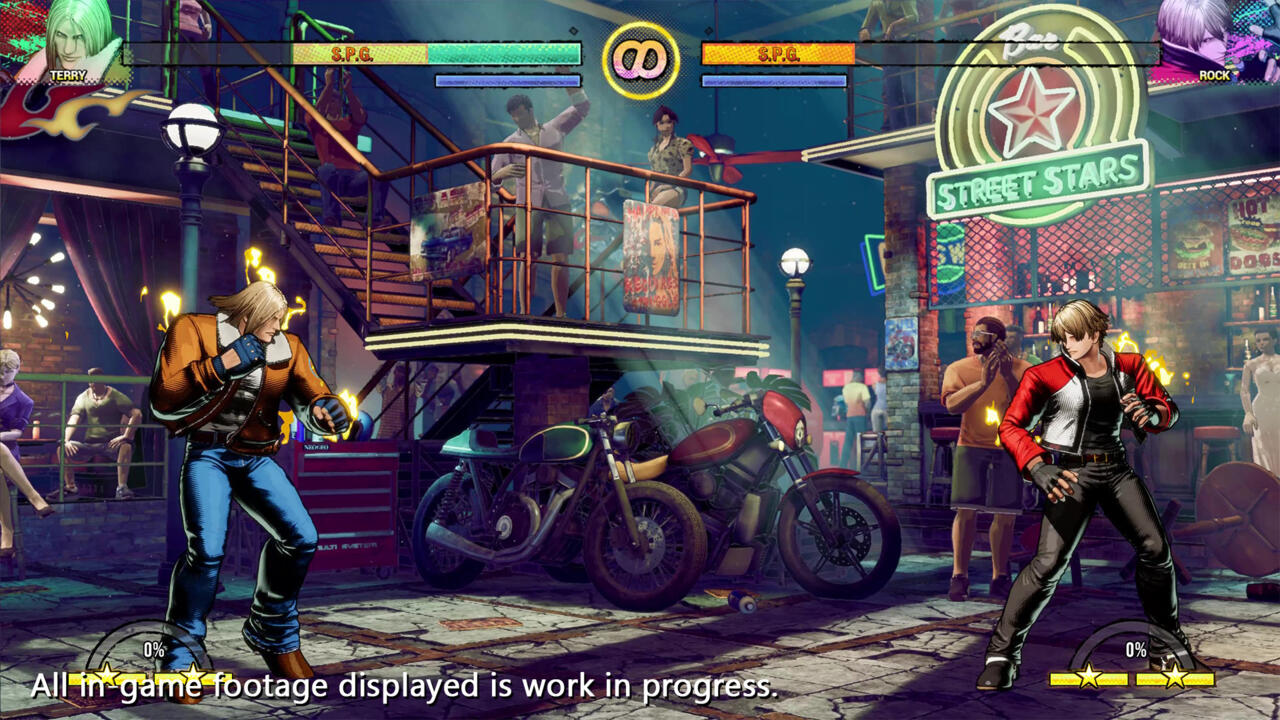Fatal Fury: City Of The Wolves Makes A Strong Case For The Series' Return After 25 Years
A modern fighting system mixed with new and old mechanics thrusts Fatal Fury back into the spotlight after 25 years.
Fatal Fury: City Of The Wolves is the next chapter in a nearly decade-long story for SNK. Since 2016, the company has painstakingly re-introduced its most popular fighting game franchises to the gaming world: first with King Of Fighters XIV, then Samurai Shodown in 2018, and most recently back to KOF with XV in 2021. In 2025, the company looks to revive another fighting IP, and this time it's one that hasn't seen a new entry in two-and-a-half decades. After a few hours of hands-on with City Of The Wolves during the recent SNK World Championships and speaking to the game's director, Hayato Konya, this new Fatal Fury already looks to be worthy of carrying the baton.
The demo featured five characters from the game's playable selection. Terry Bogard, Fatal Fury's original protagonist, and Rock Howard, the new face of the franchise, were teased when the game was first announced in 2022. Two more characters, meanwhile, were confirmed to be returning from previous entries: Hotaru Furaba and Tizoc--both of whom debuted in 1999's Garou: Mark Of The Wolves--now become playable again for the first time since The King Of Fighters XI in 2006.
All four of these fighters are faithful to their original designs; Terry is still a versatile bruiser, while Rock Howard continues to create guessing games thanks to Rage Run and Crack Counter. Hotaru thrives on powerful strikes while in close range--though she does still have a fireball for opponents at a distance--and Tizoc can still shift the momentum of a match with one well-timed command throw.
The fifth character is Preecha, a student of Fatal Fury alumni Joe Higashi who uses a similar Muay Thai style. Preecha was designed for new players to enjoy, according to Konya, as she is "a way for players to dip their toes into the pool before jumping in fully." Asked if Preecha is taking Joe's place in the world of Fatal Fury, Honya quickly pointed out that while she is complementary to Joe in that she "borrows some of his catchphrases and attacks," she is not a one-to-one representation of the legacy character; as Honya put it, Preecha "is not Joe's replacement."

As is standard in fighting games, each character has a slate of normal moves and special moves, which in City Of The Wolves also includes three different types of "super move." Ignition Gears are "level one super moves," which can be performed when one of the two bars at the bottom of the screen is filled (as depicted by a star on top of the bar). When both bars are filled, you can turn the Ignition Gear into a more powerful Redline Gear for added hits and damage. The final super attack, Hidden Gear, requires special parameters to be fulfilled before you can perform them; these moves were so "hidden," in fact, that SNK didn't tell us how to perform them--though we did figure them out for two of the five fighters in the demo. That doesn't mean they're easy to pull off, however, as one of them required three full rotations on the stick before hitting the attack button, while the other was down, down-forward, forward twice, then from forward to back and attack.
The main new addition within City Of The Wolves is the REV System, a mixture of offensive and defensive mechanics that enhance each fighter's abilities in battle. Some of the REV System's parts will sound familiar--REV Arts, for example, are more powerful versions of a fighter's special moves, a la EX specials from Street Fighter 6. REV Blow, however, is a unique attack that damages an opponent and creates distance at the same time, while REV Accel lets you link REV Arts and REV Blows together for massive combos. There's a new defense-focused ability too, REV Guard, which is a special block that will push an opponent back further after each blocked attack.
All of these are managed by the REV Gauge, a semi-circular bar in the bottom corner of the screen. The REV Gauge doesn't fill to give you access to REV abilities, though; instead, the bar fills as you use REV moves, and once the bar fills, you'll go into a Overheat state and lose the ability to use REV until the bar depletes. Though you're not helpless while in Overheat--walking toward an opponent and/or landing an attack will speed up the meter's depletion, while a successful Hidden Gear will automatically set it back to zero--the loss of those powerful tools does put you at a disadvantage.

In action, the REV system creates some exciting possibilities, as chaining moves together makes for flashy and powerful combos. Managing the meter brings a strategic element as well, as the threat of Overheat constantly keeps you thinking about whether you can afford to throw a REV ability and risk losing them for a time. The Overheat mechanic is a smart way to ensure that players don't rely solely on REV in each match, as the threat of being locked out of those moves will force them to proceed carefully.
This new REV system is a major part of modernizing Fatal Fury, which Konya said was a huge focus. "The previous game, Garou, is 26 years old, and remaking that old game isn't going to sell copies," Konya said. "If we're going to make this game, it has to be something different and more modern, and with [the REV system] we think this new project keeps the overall feeling of the previous game, while also adding new things for players to discover."
City Of The Wolves also features a "modern" control scheme suited to accommodate new and novice players. As in other recent fighting games, this Smart Style adjusts each character's movesets to perform special moves more easily, replacing the traditional sequential command inputs of Arcade Style with simplified single-button inputs. Rock Howard's Reppuu Ken--which is down, down-forward, forward, and attack in Arcade Style--can be performed with a single button press in Smart Style.

This design was created with a specific type of player in mind. "Typically, a lot of fighting games have the hardcore players who want full inputs," Konya says, "and there are also people who play offline and just want to push buttons, have fun, and not worry about advanced tactics. Smart Style was made with those players in mind."
However, not every special move in a character's arsenal fits into the Smart Style, as some maintain their command inputs regardless of the player's choice. Konya hopes that this will organically encourage new players who start with Smart Style to eventually make the jump to Arcade Style. "They may see some moves or combos for the character they like and think, 'Wow, that looks cool. I want to see how that works.' Our hope is, in this manner, this will make them want to go offline and practice with Arcade Style in training mode to add more to their moveset."
There are a few mechanics from Garou: Mark Of The Wolves that have transitioned to City Of The Wolves, though with some key differences. Just Defense--a precisely-timed block which increases health among other perks--makes a return, but accompanying them is a new Hyper Defense ability, which acts similarly to Just Defense but specifically defends moves which hit multiple times. If you're able to sense when an opponent might throw a multi-hit move at you, a Hyper Defense can turn the tables quickly and with style.

The most interesting return, however, is SPG, or "Selective Potential Gear." Formerly called TOP, SPG sees you designate a third of your life bar as "in SPG"--which grants you gradual health recovery, more powerful attacks, lessened REV Gauge growth, increased super meter growth, and the ability to use the Hidden Gear attack if both super meters are filled when in SPG. It can be placed at the beginning, the middle, or the end of the life bar, and the farther down it's placed, the more beneficial it becomes once your life bar reaches the SPG zone and it activates. A few characters we played during the demo seem to benefit from specific placements--Tizoc, for instance, can use it as a comeback mechanic where two or three command grabs can take out an opponent regardless of how far behind he is in the round.
Konya, however, sees the benefits as more player-specific rather than character-specific. "It's more of a reflection of the individual player's play style," Konya says. "For example, let's say you set it to the front; you play through the first round, and then in round two you see that you have a full super meter. From there, you can go right in, use your REV abilities until you hit Overheat, and then use your Hidden Gear in order to reset Overheat. Being in SPG mode at the start of a round lets you do that, and some players want to come out hot and heavy right at the start."
After 26 years, SNK is confident Fatal Fury can make its mark in what is becoming an increasingly crowded fighting game space. The team is confident their approach will delight fighting game fans new and old, as, according to Konya, the tactical elements brought to each match through the REV system and SPG will bring a unique layer of enjoyment. "You're not just picking characters and hitting buttons," Konya says. "There's also the mind game of where you're placing SPG and things like that. That's the shining star of this new Fatal Fury."
Fatal Fury: City Of The Wolves is scheduled to release in early 2025, though specific platforms have not yet been announced.
Got a news tip or want to contact us directly? Email news@gamespot.com
Join the conversation